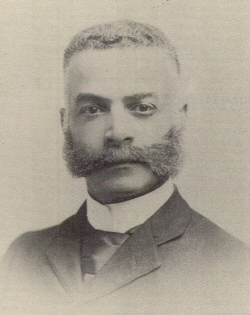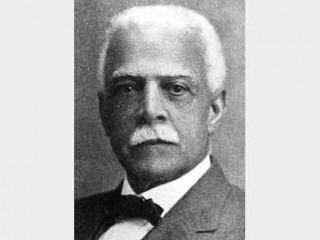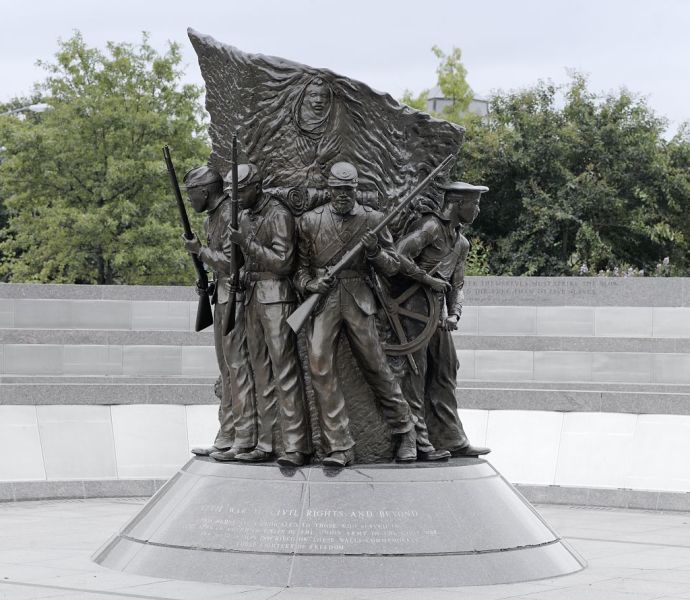Opening in 1999, the African American Civil War Memorial and Museum is presently located at 1925 Vermont Avenue NW in Washington, D.C. Its purpose is preservation and presentation of the accounts and contributions of those 209,145 members of the United States Colored Troops (USCT) and their involvement in the Civil War.
More than 200,000 of these members were African Americans who served in the U.S. Army and U.S. Navy and their involvement influenced not only the victory of the Union over the Confederacy, but it also led to the ultimate ending of slavery of over 4,000,000 persons of African descent. The other members of the 175 regiments of the USCT include, as per the website of the National Park Service on the museum and memorial, “7,000 White officers and 2,145 Hispanic surnames. Also honored are the approximate 20,000 Navy sailors whose names are not yet on the wall because the Navy was not segregated.”
The mission of the African American Civil War Memorial and Museum has two purposes. The first is to insert the massive contributions, including sacrifice of life, of the members of the USCT into American history and culture. The second is to increase cultural tourism and spur economic revitalization of the historic U/Shaw Street community that has yet to recover since the riots of 1968.
Installed across the street from the museum, at the corner of Vermont Avenue, 10th Street and U Street NW, is the African American Civil War Memorial. The memorial was developed by and dedicated under Dr. Frank J. Smith, a historian and founding museum director; and Colin Powell, the four-star general of the U.S. Army and first African American Secretary of State.
Following this dedication, the African American Civil War Memorial was first introduced as a bill in Congress by Representative Eleanor Holmes Norton (D-DC) in 1992. After its passage, the DC Commission on the Arts and Humanities sought an artist to create a work that would honor the men who bravely served in the Civil War. The inimitable African-American sculptor Ed Hamilton of Louisville, Kentucky was commissioned in 1993 for this memorial.
Four years later, Hamilton completed a powerful 10-foot bronze sculpture, entitled, The Spirit of Freedom. In 1998, the memorial was dedicated by the African American Civil War Memorial Freedom Foundation. Incorporated in 1992, the foundation, led by Smith, seeks to educate the public about the diverse contributions of the courageous members of the USCT.
Adjacent is a path containing numerous walls which contain inscriptions of the names of the members of the 175 regiments of the United States Colored Troops. In describing the memorial, the museum’s website states that the “sculpture portrays uniformed soldiers and a sailor at a height of ten feet with a family depicted on the back of the sculpture and is situated in the center of a granite-paved plaza, encircled on three sides by the Wall of Honor. The wall lists the names of 209,145 USCT drawn from the official records of the Bureau of United States Colored Troops at the National Archives, on 166 burnished stainless steel plaques arranged by regiment.”
The erection of the museum and memorial was purposely selected for placement in the U Street Corridor of Washington, D.C. because it is an area historically known for African-American culture. Items such as ephemera, newspaper articles, photographs, primary documents, weaponry and uniforms are displayed in order for guests to learn more about the USCT at this point in American history.
Because of the focus of the African American Civil War Museum, it is frequented by many of those who wish to learn more, whether it be for pedestrian, research or genealogical interests. The latter is significant as the institution has its own African American Civil War Memorial Registry where it, according to its site “documents the family trees of more than 2,000 descendants of those men who served with the USCT. Oher descendants may register. Visitors can easily search the database to find ancestors and relatives registered in the Descendants Registry.” This is paramount, as the museum and memorial receives approximately 200,000 visitors annually.
Wanting to promote its mission of the importance of the USCT and the life of African-Americans pre- and post-civil War, it is critical that the Museum provides exceptional experiences and diverse opportunities to engage the public. Technology and creative programming, including discussions, exhibits, film screenings and historic re-enactments, can meet the cultural, educational and historical needs of those domestically and globally. One recent exhibit was Slavery to the White House: The USCT Heritage of First Lady Michelle Obama. As stated on the museum’s site, the showing “will explore the story of the First Lady’s two ancestors, Jerry Sutton/Suter, 55th USCT and Caesar Cohen, 128th USCT, both of which are listed with their respective regiments on the Wall of Honor of the African American Civil War Memorial.”
The African American Civil War Museum will soon have a new home at the historic Grimké Building. In 2018, it announced the signing of a 99-year lease with Community Three Grimké, LLC, its development partner. This new 12,000 square-foot location will allow for expansion of the museum, including amenities such as an art media center, to greater meet its mission.

(No copyright infringement intended).
The Grimké Building is named after Archibald Henry Grimké, an attorney, diplomat, journalist and community leader. Though he was born into slavery in Charleston, South Carolina, he became the second African-American to graduate from Harvard Law School and later served as the American Consul to the Dominican Republic.

(No copyright infringement intended).
Archibald contributed greatly in developing the Grimké family to become one of the most influential African-American families in Washington, D.C. Their vast works and many contributions in the arts, civil rights, education and religion have left a rich legacy that has greatly impacted both the Black community in America and the world.
Entry to the museum is free to both individuals and groups. However, if a group wants to arrange a tour or be a part of a particular program, it is advised to please contact the museum prior to visiting to greater ensure this possibility. Guests should anticipate spending at least an hour for their visit. Additionally, photographs may be taken as long as no flash is used. It is also encouraged, as per its site, that visitors may “share photos and memories of your museum visit with us and others by joining our group on Facebook and Twitter.”
The standard hours of operation for the African American Civil War Memorial and Museum are as follows:
- Monday: 10 am – 5 pm
- Tuesday through Friday: 10 am – 6:30 pm
- Saturday: 10am – 4 pm
- Sunday: 12pm – 4 pm
The museum has limited onsite parking for vehicles and buses. It may also be accessed by using the public mode of transportation, the Metro.
